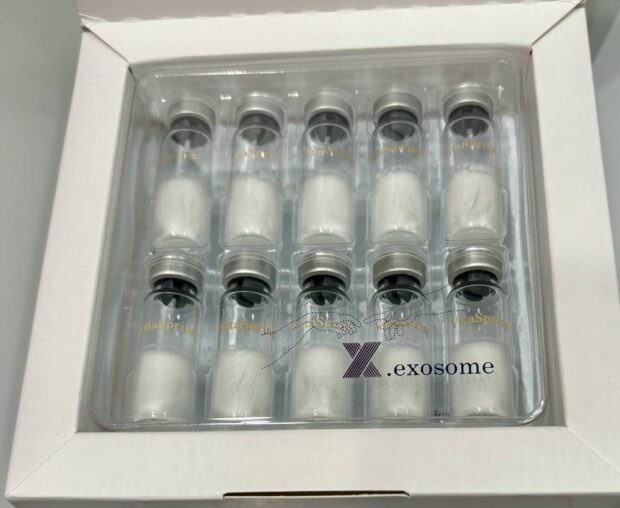
Promoted in advance skin and hair rejuvenation, exosome-based therapies are being used in the treatment of autoimmune diseases, respiratory ailments, inflammatory conditions, among others, as reported in clinical trials.
“As an antiaging strategy, exosomes are like a top-up for healthy functions,” says longevity expert Dr. Rex Gloria. “If the body is not functioning at its maximum performance despite a balanced diet and adequate supplementation, these mesenchymal stem cell (MSC)-derived exosomes can endow the body with restorative benefits.”
In treatments, exosomes are extracted from MSCs, living cells harvested from a donor such as the newborn’s umbilical cord, placenta or amniotic sac, the fluid-filled pouch that protects the fetus, or from the same patient’s body.
Exosomes are tiny cellular containers formed by nucleic acids, proteins, lipids, peptides and metabolites that are provided with remedial functions. They send signals to the unhealthy cells, prompting them to regenerate and initiate the body’s healing process.
“In stem cell transplantation, you put a set of living cells into your body which remains there and multiplies. These cells may regenerate certain organs that are diminishing in function,” says Dr. Gloria.
However, stem cell therapies pose risks such as tumor formation and infusion-related toxicities. Stem cells are big in size, such that they could clog the lungs.
“When you administer intravenous infusion, the stem cells immediately go into the lungs first. They might accumulate or clump and could be a cause of issues,” says Dr. Gloria. He adds that some patients refuse to receive stem cells from another person.
Immediate benefits
On the other hand, exosomes are nanoscale vesicles or micro, thin-walled sacs. They do not replicate like stem cells. “Exosomes are nonliving, although they contain what the body needs and are transported outside the cells. More researchers are saying that doctors prefer noncellular therapy, meaning, they provide the benefits of stem cells without transplanting them,” says Dr. Gloria.
He cites the site www.clinicaltrials.gov, which has uploaded scientific studies that indicate that stem cell-derived exosomes may partially replicate the effects of their donor cells without the risks found in stem cell therapies.
Dr. Gloria explains that exosomes are used to communicate information to the body in removing unhealthy structures or substances.
“Healing is inherent, but the body forgets to function that way because of what we eat, what we are exposed to or the lack of other factors that are vital to our system. Exosomes bring the body’s function back into its original state.”
He adds that they are safer, more accessible and affordable than stem cell therapy. His clinic imports the exosome vials from a publicly listed stem cell company in the United States with a research arm in Taiwan.
“The company uses a particular set of stem cells derived from the placenta called the master cell. It is the only stem cell known to not cause any tumor. It is located on a specific layer in the placenta that is intimately shared by both the mother and the baby,” he says.
The exosomes are administered either subcutaneously (belly fat) or through intramuscular (buttocks) injection. The patient undergoes a series between three and 10 days. The therapy can be administered biannually.
“Exosomes are used right away by the body and patients feel the benefits much faster than the conventional stem cell infusions. They don’t stay long in the body. Once the body utilizes it, you might need more in the coming years. People with low energy, those who get enough rest but still feel tired, or those who feel sickly even if they have never been sick will feel the effects immediately,” he says.
Dr. Gloria prescribes exosome therapy for prevention and longevity, particularly for patients over 50, not when the person is sick. —CONTRIBUTED